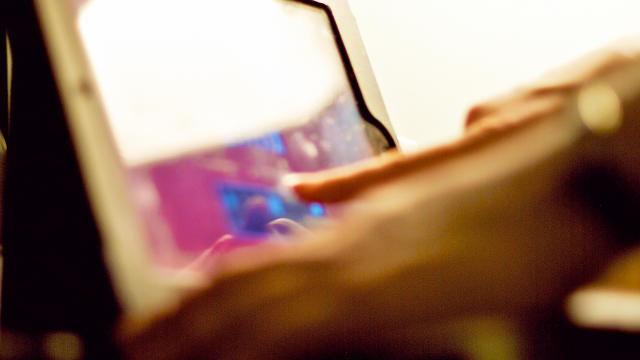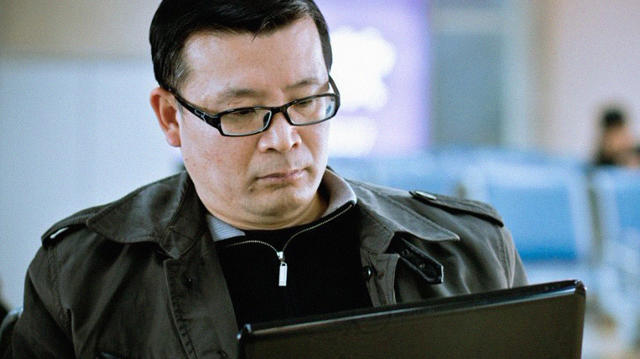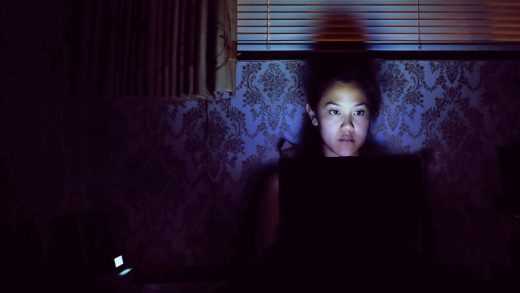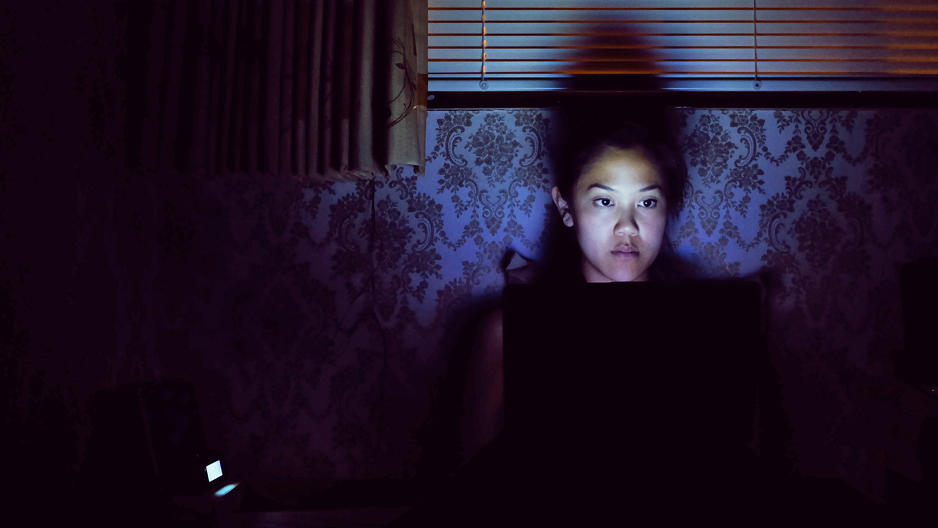Can One App Revolutionize TV Ratings For The Streaming And Binge-Watching Era?
Silicon Valley is notoriously secretive about its data. So are the streaming TV companies based there. But to paraphrase Jeff Goldblum, data, uh, finds a way.
During the 2016 Television Critics Association (TCA) Winter press tour, NBC’s research president Alan Wurtzel revealed that he was not terribly concerned about the threat of digital competitors like Netflix, Hulu, and Amazon Prime.
“The reports of our death have been greatly exaggerated,” he said, referring to the broadcast industry at large. “I don’t believe there’s enough stuff on Netflix that is broad enough and consistent enough to affect us in a meaningful way on a consistent basis.”
He then cited specific ratings numbers that up until that point had never been made public because Netflix has always refused to release them: Jessica Jones averaged 4.8 million viewers, Master of None 3.9 million, and Narcos 3.2 million. The press went wild. They finally had cold hard numbers.
How did Wurtzel come up with these figures without Netflix’s cooperation? With Symphony Advanced Media’s VideoPulse, which tracks cross-platform viewing. It does so with an integrated app that passively collects audio fingerprints for all programming, both live and playback. Every single program automatically has an audio fingerprint, which is a condensed digital summary generated from an audio signal. The app simply matches it to a database that ingests all programming content across networks and streaming channels. The San Francisco startup, which launched in September 2015, depends on a diverse panel of users who run the app in the background of mobile devices, TVs, or laptops.
The app offers brand-new insight into consumer behavior. It can follow platform conversion—i.e., if someone watches a program on digital first, then switches to live TV. It also counts minutes watched and, through GPS, can track whether users are watching at home or on the go.
A few days after Wurtzel’s presentation, Netflix chief content officer Ted Sarandos publicly responded in his own TCA panel, calling the data “remarkably inaccurate.” But many top media companies, including Viacom, AMC, and Sony, believe otherwise. Nearly a dozen of them signed up for VideoPulse’s services to peek inside their competitors’ streaming success in addition to their own.
As expected, the media coverage gave Symphony a “real shot in the arm,” according to Symphony Advanced Media president and CEO Charles Buchwalter. “It took over the industry for three months because no one had ever seen streaming ratings before.”
Soon thereafter, hit shows such as Orange Is the New Black and Stranger Things came out, and Symphony’s data on viewership for each proved what Netflix had been saying all along—that its programs generate buzz and attract viewers. Lots of them: almost 16 million for OITNB and 14 million for Stranger Things.
Reflecting on sparring with Netflix, Wurtzel says, “It was a little blown out of proportion, this tiff that we had.”
Wurtzel brushes off the press-inflamed “feud,” but he understands why Netflix would be protective of its data. The streaming company doesn’t rely on advertising; its subscription model relies on buzz, so how would ratings benefit them? The industry frustration, however, stems from Netflix’s claim that its shows are popular—a claim never backed up with concrete data.
“The fact of the matter is, this is America, and Symphony has been able to measure [Netflix ratings] by going a different way,” says Wurtzel. “Because we’re in new territory now with cross platform and various digital components, I think the industry benefits when we can evaluate different ways to measure content and consumption.”

The Nielsen Of Streaming?
When Symphony debuted in 2012, it conducted studies for leading advertisers and agencies into cross-platform ad effectiveness. The startup shifted its focus after speaking with various media companies about the entertainment industry’s desperate need for information.
“The [industry] frustration was at a boiling point. No technology was really addressing how people were changing their media consumption habits,” says Buchwalter, who spent 13 years at Nielsen. “Cross-platform, cross-media behavior was taking off, but [media measurement providers] weren’t moving quickly enough to track it.”
Like Nielsen, Symphony relies on a wide pool of demographics to represent the greater population. But unlike Nielsen, it tracks content far beyond seven days after live viewing (referred to as live plus seven or L7), the current industry norm that dictates what advertisers pay. Symphony extends to 35 days beyond the live air date.
This is especially helpful for tracking the behavior of under-35s, who increasingly watch programs with a significant delay (shows include the CW’s Jane the Virgin and Fox’s Brooklyn Nine-Nine). Symphony research has found that almost 30% of all millennial TV viewing occurs beyond seven days after original broadcast via the usage of DVRs, VOD, and OTT devices.
John Sollecito, SVP of client solutions at Symphony, sees time-shifted viewing growing across all ages and demographics.
“Data shows that more video is being consumed than ever before,” he says. “We’re painting a much different picture than what the industry is saying.” Advertisers pay media companies based on the L7 model, which means those companies are often at a disadvantage when negotiating the value of their libraries, because the model doesn’t reflect the reality that people are watching programs long after they’ve aired. Fifty percent of the under-35 demographic, for instance, watches shows more than seven days after air date, with an increasing dependence on apps like Roku or Hulu. Thirty-two percent of the 35-day rating for FOX’s New Girl came from viewership on Hulu. “This whole concept of delayed viewing has transformed the industry,” says Buchwalter.
Colleen Fahey Rush, EVP and chief research officer at Viacom, has been working with Symphony for over a year. She finds the delayed viewing ratings especially helpful for analyzing consumers’ behavior within the streaming TV landscape.
“It’s interesting to see how some of them, as soon as all the episodes drop, there’s a lot of viewing in the first few weeks, while other streaming shows are slow to build over a longer period of time,” she says. Overall, she says, she and her fellow execs have “a lot of appetite for as much data and viewing consumption insight that we can get our hands on.”
The L35 model yields valuable numbers, according to Symphony’s research. It found that in 2016, for example, Netflix’s fourth season of Orange Is the New Black averaged 15.9 million adults ages 18-49. The next most popular programs were the Fuller House reboot (15.6 million), Stranger Things (14.3 million), and season nine of CBS’s The Big Bang Theory (11.5 million). Hulu’s most-watched program was the miniseries 11.22.63 (3.5 million), and Amazon’s was the docuseries The Grand Tour (2.8 million).
“If people can use our data to have an idea of what percentage of any particular program is being viewed beyond the Nielsen currency [of L7], and if that can be shared with advertisers and agencies, it’s going to help the industry get compensated for their efforts to make that viewing available when consumers want it,” Buchwalter says.

A Startup On The Rise
As of January 2017, Symphony’s focus groups consist of 17,000 people. The startup modeled itself after companies like MRI and Pew, with an emphasis on nine core demos.
“We are constantly in the process of growing the panel,” says Buchwalter, who admits it’s “an ongoing battle” to recruit from certain age groups. The young are easy (“We have more millennials than we need,” he says with a laugh). Harder to attract are the wealthy, and people over 65. Symphony offers incentives, which range from $5-$11 a month, depending on how many devices users register or how many friends and family they get to join.
Buchwalter is quick to note that his startup is still growing and fine-tuning its product services. The company works hand-in-hand with its clients, adjusting its data processes and methodology.
Viacom’s Rush, for example, considers Symphony to be a “partner” and has requested that Sollecito’s team cut data or structure panels a certain way. “Their approach to cross-platform measurement felt innovative,” Rush says. “There’s a lot of back and forth and advising.”
Buchwalter believes Symphony’s small, nimble team was pivotal in capturing the market in time. “Nielsen has done many great things, but when you become such a large company, bringing new products to market is very difficult,” he says. “It doesn’t take us months to go back to engineers [and implement a client’s request].” With a market evolving at a dizzying pace, he sees this as a crucial component to servicing media companies desperate for more data.
Nielsen, known for measuring live TV viewership, and Comscore, known for digital, are both trying to integrate full cross-platform inclusion, but neither have introduced a product like VideoPulse.
While Wurtzel admits it will be a long time before the industry incorporates digital measurement, he believes Symphony has already broken the mold. “The progress that Symphony made in one and a half years is remarkable,” he says. “Competition makes everyone improve their game.”
Moving forward, Symphony is considering expanding into measuring ad viewership for digital and television programming, another area that is underserved. Metrics like these would be of interest to many, including NBC.
“[Symphony] understands that merely measuring program content is only half the picture, because advertisers are much more interested in the consumption of their commercials,” Wurtzel says.
To meet these constantly multiplying demands, Symphony is working to build out new services that will track everything we watch, on every device, everywhere we go. Will it be the tool that finally satisfies content providers and advertisers?
“Given how quickly [cross-platform viewership] is developing, they can’t wait nine, 12, 18 months for these other companies to supply a solution,” says Buchwalter. “That is the next frontier.”
Fast Company , Read Full Story
(13)



